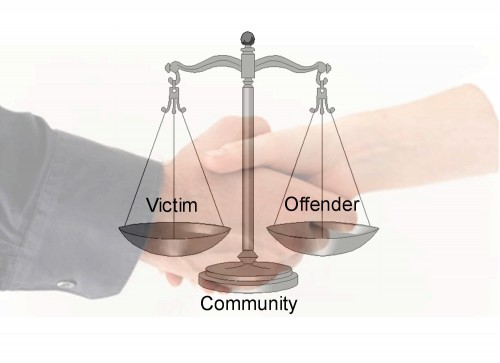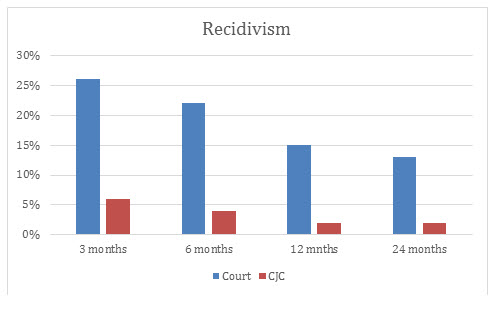 By Deborah Brusco, Diane Clarke, Elvia Garcia, Kara Hunter, Jeannette Lejardi, and Manuel Medeiros
By Deborah Brusco, Diane Clarke, Elvia Garcia, Kara Hunter, Jeannette Lejardi, and Manuel Medeiros
Over the past several years, restorative justice has been showing up as a thread in our community’s conversations around local incidents – including crimes – that have affected us all. And in the last few months, this theme has again appeared in our public discourse in response to recent local incidents.
As members of the Yolo Conflict Resolution Center’s Restorative Justice Work Group, we are supporters and practitioners of restorative justice processes in Davis and Yolo County. As such, our perspectives are rooted in our experiences in these roles. In addition, however, we are shaped by, and embedded in, an ongoing national and international paradigm shift that has been taking place in how communities respond to crime and other kinds of wrongdoing.
We are writing to celebrate the continuing evidence that restorative justice, as an option in response to crime, has become part of our community’s consciousness – has become part of our “horizon of possibility,” if you will.
Having said that, we acknowledge that as horizons change, questions emerge. Therefore, in addition to celebrating this ongoing conversation, we want to share our thoughts on a couple of underlying questions we’ve heard emerging within the conversation: When is restorative justice an appropriate community response to crime? And why, what are the benefits?
Before turning to that, though, we’d like to take the opportunity to offer a definition, some background, and basic principles of restorative justice.
What is Restorative Justice?
Restorative justice calls for a fundamental shift in how we think about and do justice. Restorative justice changes the questions we ask when crime happens, shifting the focus away from, “What laws have been broken, who is guilty, and how should they be punished?”
Instead, affected parties are brought together to ask, “what happened, what are the harms, and what needs to happen to make things as right as possible?” Howard Zehr, one of the founders of the movement in the United States, defines restorative justice as “an approach to achieving justice that involves, to the extent possible, those who have a stake in a specific offense or harm to collectively identify and address harms, needs, and obligations in order to heal and put things as right as possible.”
Background and Principles
In The Little Book of Restorative Justice, Zehr reports that “since the 1970s, a variety of [restorative justice] programs and practices have emerged in thousands of communities and many countries throughout the world.” These programs and practices take many different forms, including, to name just a few, victim-offender conferences, circle processes, and broader frameworks that encompass situations of mass violence.
Undergirding all of these diverse practices and programs Zehr identifies the following foundational principles:
- Crime is a violation of people and relationships.
- Violations create obligations.
- Justice involves victims, offenders, and community members in an effort to put things right.
- Central focus: victim needs and offender responsibility for repairing harm.
When is Restorative Justice an Appropriate Community Response to Crime?
Restorative justice has been used in a wide variety of situations, including at various points within the formal criminal justice process, as an alternative to that process, and, increasingly, as a preventive approach for individuals at risk of entering the formal justice system. In Yolo County, we are relatively new to use of restorative justice, and it is mainly used with first-time offenders. In 2013, the Yolo Conflict Resolution Center (YCRC) participated with the Yolo County District Attorney’s Office in designing and starting a restorative justice program for adults that handles crimes such as public intoxication, public urination, shoplifting, vandalism, noise violations, and other similar crimes.
Known as Neighborhood Court, this D.A.’s Office program is now in its fourth year of operation. This year, the Davis Police Department, in partnership with YCRC, initiated a juvenile restorative  justice program to handle the most common types of juvenile crimes, including shoplifting, minor in possession of alcohol, public intoxication, and other similar offenses. Several schools in the county have implemented or are initiating restorative justice processes into their policies addressing student disciplinary actions and staff personnel issues.
justice program to handle the most common types of juvenile crimes, including shoplifting, minor in possession of alcohol, public intoxication, and other similar offenses. Several schools in the county have implemented or are initiating restorative justice processes into their policies addressing student disciplinary actions and staff personnel issues.
Though we have mentioned above only relatively minor crimes associated with the use of restorative justice in Yolo County, we know that restorative justice is being used successfully in other communities with more severe crimes. We hope to see our community contribute to the paradigm shift where the use of restorative justice processes continues to become our norm for many or most crimes while our criminal justice system plays more of an augmenting or backup role when that is appropriate. We believe this is possible and feel the tide beginning to turn as our community continues to see the significant benefits of restorative justice processes:
Benefits – Participant Satisfaction. For people who have been harmed, benefits of restorative justice processes include greater feelings of empowerment, personal validation of violation, empathy received directly from those who have caused harm, more likely repayment for damage and losses, and greater feelings of justice and future safety.
For people who have caused harm, benefits include personal recognition of wrongdoing, opportunity to make things as right as possible, increased feelings of empathy/cognitive-behavioral changes, new personal goals and plans for the future, and renewed family and community support.
For community members who have been harmed, benefits include validation of violation, repayment for damage and losses, greater feelings of justice and future safety, opportunity to welcome those who have caused harm back into the community, and opportunity to alter circumstances in the community that may have contributed to the wrongdoing.
Benefits – Reduced Recidivism Rates. Recidivism refers to the rate at which a person re-offends. Many studies exist documenting the impact of restorative justice in reducing rates of recidivism. A recent study conducted by the Center for Peacemaking and Conflict Studies at Fresno Pacific University compared recidivism rates of youth offenders who participated in Fresno’s Community Justice Conference (CJC) program versus those who went through the formal court system and found: after 1 year, the juveniles who participated in the CJC program had a recidivism rate of 2%, while those who went through the criminal justice system had a 15% recidivism rate. Over 2 years, the recidivism rates were similar, with CJC participants having a 2% recidivism rate and non-CJC participants having a 13% rate. The Yolo County Neighborhood Court program reports that the recidivism rate in their adult restorative justice program is 4%, also a very low rate of recidivism.

Benefits – Cost Savings. The same study conducted by Fresno Pacific University compared the cost of cases diverted to the CJC program and found that the costs of cases processed solely through the court system were significantly higher.

As supporters and practitioners of restorative justice, we encourage community members to join us in continuing the conversation around the use of restorative justice processes in our responses to crime and wrongdoing in our community. YCRC will be hosting community events, beginning on July 10, 2017, and in upcoming months to provide opportunities for us to engage as a community in conversations about restorative justice. More information is available on the YCRC Web site at http://www.yolocrc.org/index.html.
Deborah Brusco, Diane Clarke, Elvia Garcia, Kara Hunter, Jeannette Lejardi, and Manuel Medeiros are members of the Yolo Conflict Resolution Center Restorative Justice Work Group.






#crickets#
. . . I guess the conversation stopped.
Perhaps because, if you ask 5 people what RJ really means, you’ll get 7 answers… not sure tho’…
Chirp……………… chirp………………..
Which is unfortunate
Can you give us a definitive explanation of the term, that the majority of people might get behind?
How about – a system of criminal justice that focuses on the rehabilitation of offenders through reconciliation with victims and the community at large.